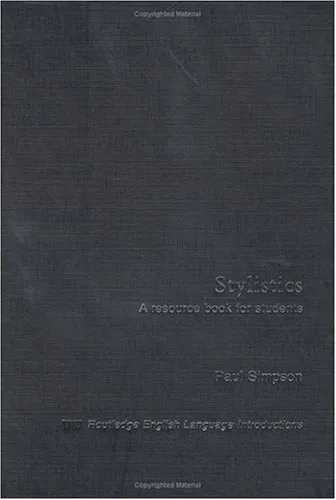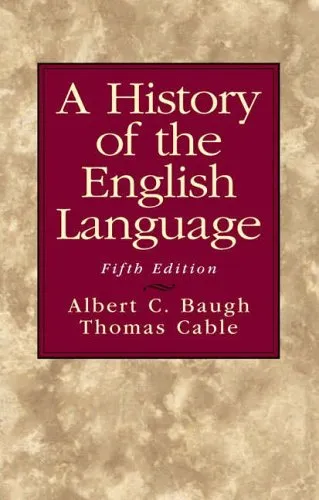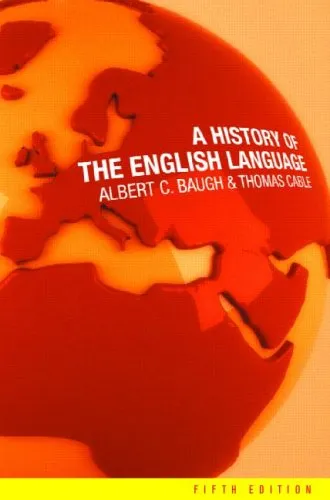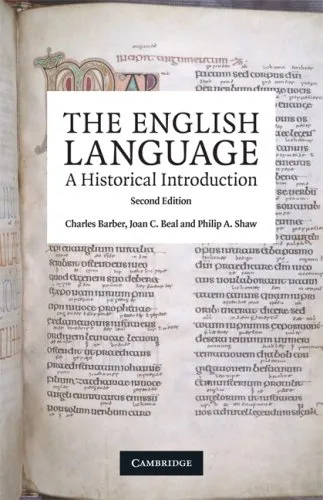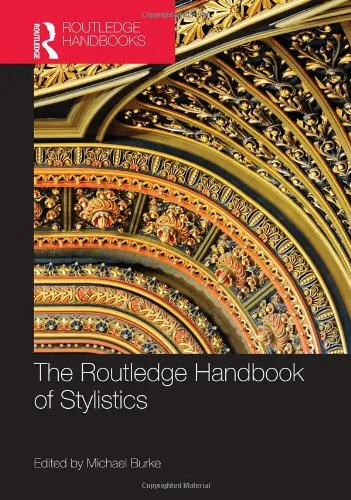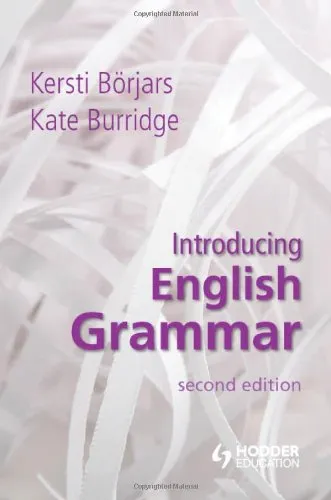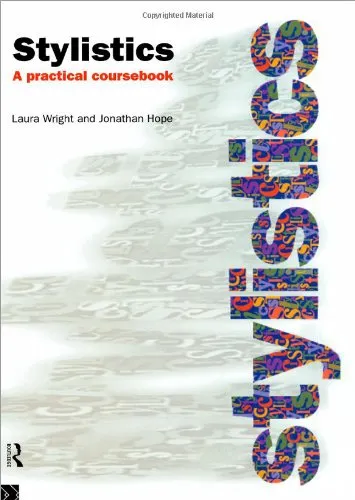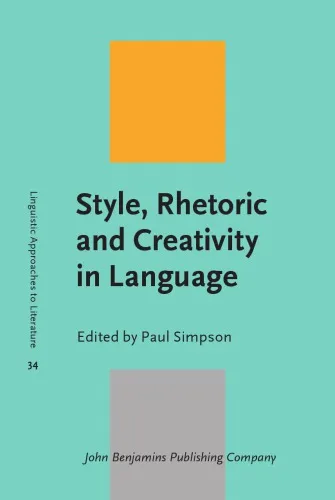Language in Literature: Style and Foregrounding
4.4
بر اساس نظر کاربران

شما میتونید سوالاتتون در باره کتاب رو از هوش مصنوعیش بعد از ورود بپرسید
هر دانلود یا پرسش از هوش مصنوعی 2 امتیاز لازم دارد، برای بدست آوردن امتیاز رایگان، به صفحه ی راهنمای امتیازات سر بزنید و یک سری کار ارزشمند انجام بدینکتاب های مرتبط:
خلاصه تحلیلی کتاب
کتاب Language in Literature: Style and Foregrounding یکی از آثار برجسته در حوزه نقد و تحلیل زبانشناسی ادبیات است که به بررسی دقیق نحوه استفاده از Style و مفهوم Foregrounding در متون ادبی میپردازد. نویسنده با نگاهی علمی و روشمند، فرآیندهای زبانی و هنری را که باعث برجستهسازی عناصر خاص در متن میشوند، تحلیل میکند.
این اثر نه تنها به خواننده کمک میکند تا زبان ادبی را در قاب تحلیل عمیقتری ببیند، بلکه پل ارتباطی میان نظریههای زبانشناسی و نقد ادبی فراهم میکند. به این ترتیب، پژوهشگران و علاقهمندان ادبیات میتوانند از آن به عنوان منبعی ارزشمند برای مطالعه تعامل میان فرم و معنا بهره گیرند.
هر فصل کتاب با ارائه مثالهای دقیق از متون ادبی مشهور، نشان میدهد که چگونه نویسندگان با تغییر الگوهای زبانی و استفاده هوشمندانه از Foregrounding، تجربه خواندن را غنیتر و ذهن مخاطب را فعالتر میسازند.
نکات کلیدی و کاربردی
از مهمترین نکات قابل توجه در این کتاب، تعریف دقیق مفهوم Foregrounding به عنوان راهبردی برای جلب توجه خواننده به عناصر خاص متن است. این تکنیک، چه به صورت آوایی، نحوی یا معنایی، میتواند نقش مهمی در شکلگیری تاثیر ادبی ایفا کند.
همچنین نویسنده با تاکید بر Style به عنوان شاکله متن، به بررسی تغییرات سبک در فرآیند خلق اثر و ارتباط آن با احساسات و ذهنیت مخاطب میپردازد. تمرکز بر ساختار جملهبندی، انتخاب واژگان و موسیقی زبان از جمله محورهای این تحلیل است.
نکته کاربردی دیگر، اشاره به روشهای عملی برای تحلیل سبک متون غیرشعر که کمتر در منابع کلاسیک مورد بحث بوده است. این نگاه تازه به پژوهشگر امکان میدهد تا دامنه بررسی خود را گسترش دهد.
نقلقولهای ماندگار
هرچند کتاب سرشار از گزارههای ارزشمند علمی است، اما چند جمله به شکل خاص در ذهن خوانندگان باقی میماند و قابلیت الهامبخشی برای مطالعات آتی دارد.
"Foregrounding ابزاری است که زبان را از عادی بودن میرهاند و ذهن را به مکاشفه وادار میکند." نامشخص
"Style نه تزئین متن، بلکه پیکربندی اندیشه و احساس در قالب زبان است." نامشخص
چرا این کتاب اهمیت دارد
اهمیت این اثر در آن است که جایگاه زبان و سبک را در شکلگیری معنای ادبیات برجسته میکند، و نشان میدهد چگونه Foregrounding میتواند تجربه خواندن را متحول سازد. این کتاب برای پژوهشگرانی که به دنبال چارچوب نظری محکم و مثالهای عملی هستند، منبعی بیبدیل محسوب میشود.
با توجه به ترکیب دیدگاههای زبانشناسی و نقد ادبی، این اثر حلقه مفقودهای را پر میکند که بسیاری از پژوهشگران در طول مطالعات خود با آن مواجه بودهاند. به این ترتیب، مطالعه آن نه تنها به گسترش دانش فردی کمک میکند، بلکه راه را برای نوآوریهای پژوهشی هموار میسازد.
اطلاعاتی مانند سال انتشار یا جوایز دریافتی این کتاب اطلاعات نامشخص هستند، زیرا منبع معتبر در دسترس نیست. با این حال، محتوای آن باعث شده تا در میان منابع دانشگاهی و جلسات بحث جدی، جایگاهی ویژه بیابد.
نتیجهگیری الهامبخش
کتاب Language in Literature: Style and Foregrounding با نگاهی علمی، عمیق و مثالهای دقیق، مسیری روشن برای فهم زیباییشناسی زبان در ادبیات ترسیم میکند. این اثر برای هر کسی که میخواهد رابطه میان ساختار زبان و تاثیر آن بر ذهن مخاطب را درک کند، یک ابزار ضروری است.
مطالعه این
Analytical Summary
Written by Geoffrey Leech, Language in Literature: Style and Foregrounding stands as a seminal contribution to the study of stylistics, bridging linguistic analysis with literary interpretation. The work examines how literary texts employ language in distinctive, textured ways, using the concept of foregrounding to illuminate stylistic creativity and reader engagement.
Foregrounding theory, central to the book’s framework, is the idea that certain features of a text are made more prominent—through deviation from linguistic norms or parallelism—to heighten aesthetic impact. This analytical lens enables readers, scholars, and critics to decode not merely what a text says but how it says it, uncovering patterns of sound, form, and meaning that enrich reader experience.
Drawing from contemporary and classical examples, Leech explores stylistic devices across genres, tracing how linguistic choices can subtly or dramatically shape narrative voice, mood, and thematic resonance. While specific publication year information is unavailable due to no reliable public source, the book remains widely respected and frequently cited in academic literature on stylistics and literary theory.
Key Takeaways
Readers will leave with a robust understanding of how stylistic analysis enriches both scholarly and personal reading, connecting language form with literary artistry.
Forefronting is not merely a theoretical concept; it is a practical analytical tool that can be applied to any text, whether poetry, drama, or prose, to reveal underlying artistic intentions.
The book demonstrates that style is an essential aspect of meaning, not a decorative addition. By studying style systematically, interpreters gain deeper insights into characterisation, plot development, and thematic emphasis.
It encourages interdisciplinary engagement, showing that literary stylistics intersects with linguistics, semiotics, and even cognitive psychology.
Memorable Quotes
Foregrounding is the artistic heightening of the language of literature, ensuring certain textual features stand out to the reader. Unknown
The style of a work holds its meaning as much as the storyline; without attention to form, one cannot fully grasp substance. Unknown
Stylistics is the meeting ground of linguistics and literary criticism, a joint exploration of how language creates art. Unknown
Why This Book Matters
Academic seriousness and practical utility unite in Geoffrey Leech’s Language in Literature: Style and Foregrounding, making it indispensable for anyone engaged in deep literary study.
For professors and researchers, the book offers methodological lucidity—clear, replicable approaches to textual analysis using stylistic and linguistic principles. For creative writers, it reveals how deliberate language choices can evoke specific responses from readers.
The connection between style and meaning, reinforced throughout, is invaluable for bridging the often separate domains of literary theory and linguistic science. Its emphasis on foregrounding theory encourages a more observant, critical, and appreciative mode of reading.
Inspiring Conclusion
In closing, Language in Literature: Style and Foregrounding offers an enduring roadmap for those seeking to bridge the gap between linguistic precision and literary appreciation.
By engaging with its principles of style and foregrounding theory, readers can expand both their analytical toolkit and their aesthetic sensitivity. Whether you are a scholar, educator, creative artist, or avid reader, the book challenges you to read with heightened awareness—seeing not just the narrative, but the crafted language that brings it alive.
Your next step is simple yet profound: immerse yourself in its pages, share its insights with peers, and discuss its applications across literary forms. Through such active engagement, the conversation prompted by Language in Literature: Style and Foregrounding will continue to evolve, enriching our collective understanding of how language shapes our experience of literature.
دانلود رایگان مستقیم
شما میتونید سوالاتتون در باره کتاب رو از هوش مصنوعیش بعد از ورود بپرسید
دسترسی به کتابها از طریق پلتفرمهای قانونی و کتابخانههای عمومی نه تنها از حقوق نویسندگان و ناشران حمایت میکند، بلکه به پایداری فرهنگ کتابخوانی نیز کمک میرساند. پیش از دانلود، لحظهای به بررسی این گزینهها فکر کنید.
این کتاب رو در پلتفرم های دیگه ببینید
WorldCat به شما کمک میکنه تا کتاب ها رو در کتابخانه های سراسر دنیا پیدا کنید
امتیازها، نظرات تخصصی و صحبت ها درباره کتاب را در Goodreads ببینید
کتابهای کمیاب یا دست دوم را در AbeBooks پیدا کنید و بخرید
1325
بازدید4.4
امتیاز0
نظر98%
رضایتنظرات:
4.4
بر اساس 0 نظر کاربران
Questions & Answers
Ask questions about this book or help others by answering
No questions yet. Be the first to ask!


